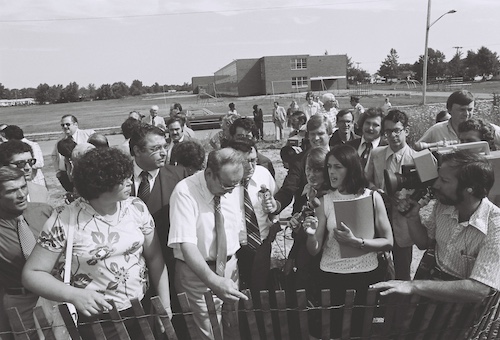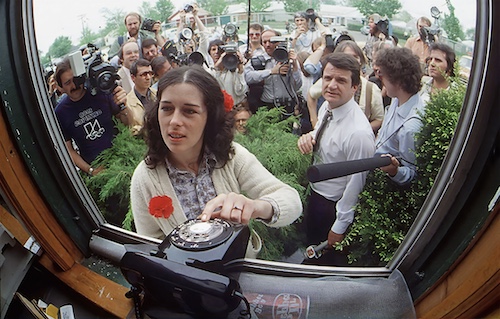Communiqué
One of the most notorious environmental and public health disasters in US history in “Poisoned Ground: The Tragedy at Love Canal” on AMERICAN EXPERIENCE – April 22 at 9 pm
< < Back toAmerican Experience
“Poisoned Ground: The Tragedy at Love Canal”
Premieres Monday, April 22 on PBS and Streaming on PBS.org
Documentary Tells the Story of One of the Nation’s Most Notorious Environmental Disasters and the Women Who Fought the Chemical Industry and the Government – and Won
The story of Love Canal began in the late 19th century, when William T. Love, hoping to harness the power of Niagara Falls, began to dig, but later abandoned, an enormous canal. Decades later, in the late 1940s, local company Hooker Chemical decided that Love’s Canal was the perfect site for a waste dump. For nearly a decade, Hooker dumped roughly 22,000 tons of dangerous chemical waste into the defunct waterway, a common disposal practice and one largely unregulated by the local government.

Credit: Mickey H. Osterreicher
During the post-war baby boom, young families seeking job opportunities in the chemical industry flocked to the area, creating a demand for land for new homes and schools. Hooker Chemical sold its waste dump land to the Board of Education for $1, with a clause exempting them from all future liability. Over the next few decades, a suburban community blossomed around the Love Canal site, with an elementary school and hundreds of homes built on top of the former canal.
By the late 1970s, the persistent smell of chemicals filled the air, and residents noticed sludge seeping into basements, corroded sump pumps, and oily backyard puddles. Children playing in the schoolyard reported chemical burns and rocks that would catch fire when skipped on the water. Most alarming, residents noted troubling health maladies ranging from skin rashes and seizures to miscarriages and birth defects.
After air and soil tests revealed the presence of dozens of chemicals, panic spread as federal and state agencies scrambled for solutions. The newly-minted Environmental Protection Agency had never dealt with a catastrophe of this scale, and President Jimmy Carter declared a federal state of emergency — the first ever for a man-made disaster. Residents closest to the dumpsite were evacuated, but those farther removed were stuck, with renters unable to afford to leave and homeowners unable to sell their homes.
Those left behind were also suffering terrible health effects from the chemicals and banded together. Led by a 27-year-old homemaker named Lois Gibbs, the women advocated for government-funded relocation and medical testing. By the summer of 1978, Love Canal became a full-blown media sensation.

Credit: Mickey H. Osterreicher
The Love Canal mothers educated themselves on chemical contamination and how to conduct health investigations. Their investigation, which found clusters of illness along old streambeds that intersected the canal, pushed health officials to recognize that the chemicals may have spread further than previously thought.
Finally, politicians began taking note of the risk that unregulated industrial practices posed to communities nationwide. Momentum built in Congress for legislation that would force companies dealing in toxic waste to help shoulder the burden of remediating impacted sites.
In May 1980, after two years of fighting, the Love Canal saga reached a breaking point when the results of an EPA pilot study indicating widespread chromosome damage were released to the community. Lois Gibbs and the Love Canal mothers held two EPA representatives hostage for several hours, a media spectacle that forced a response from Washington. Days later, President Carter declared a second federal emergency, which made the relocation of 700 remaining families possible. Months later, the Superfund Bill, which gained bipartisan support in Congress with the help of Love Canal, was finally passed into law. Love Canal was the first Superfund site identified for cleanup.
“Beyond saving themselves and their families, the Love Canal mothers forced America to reckon with how to balance the needs of the environment and industry,” said filmmaker Jamila Ephron. “Sadly, the larger story of the Love Canal neighborhood is still unfolding, and communities marginalized by class or race often bear the brunt of toxic waste contamination.”

